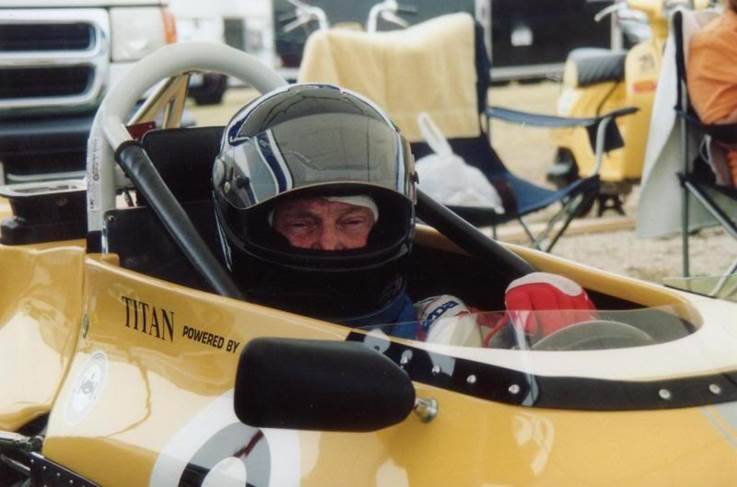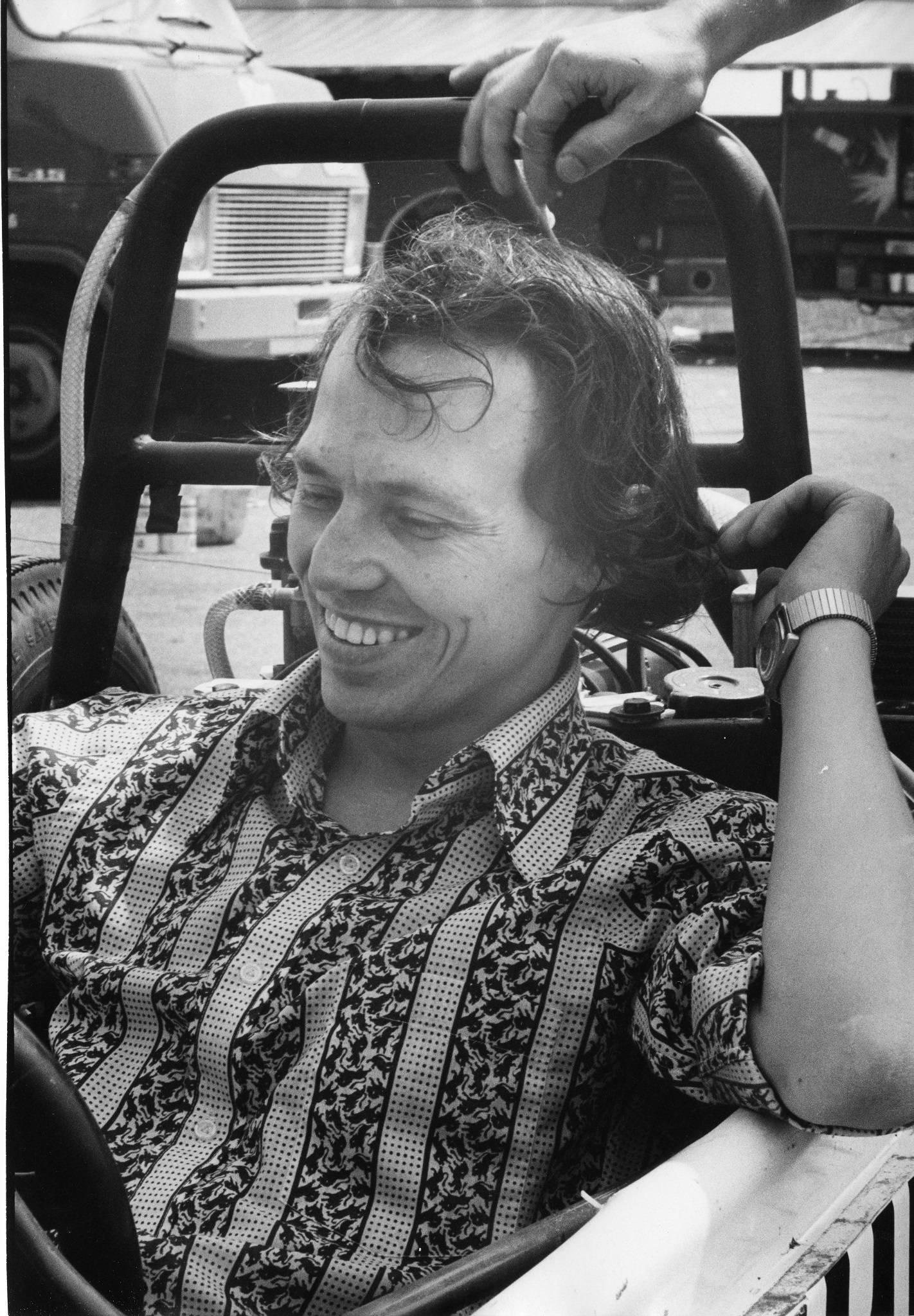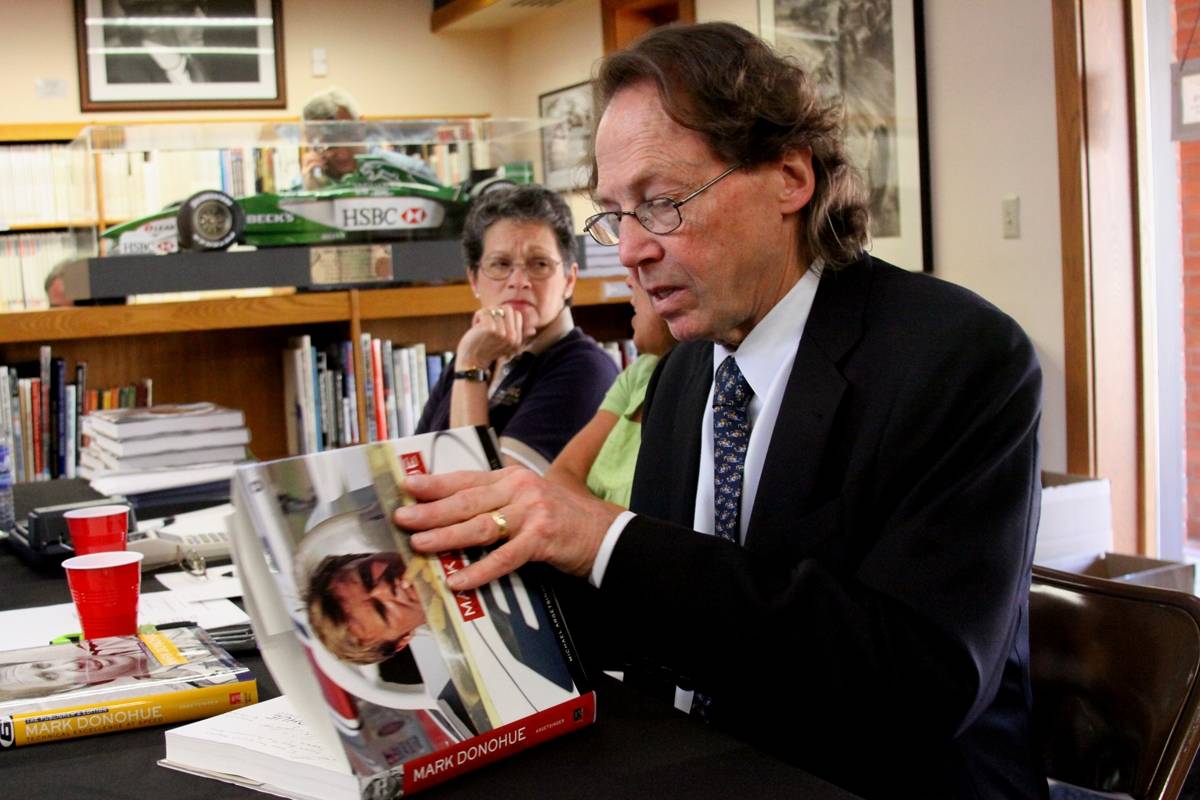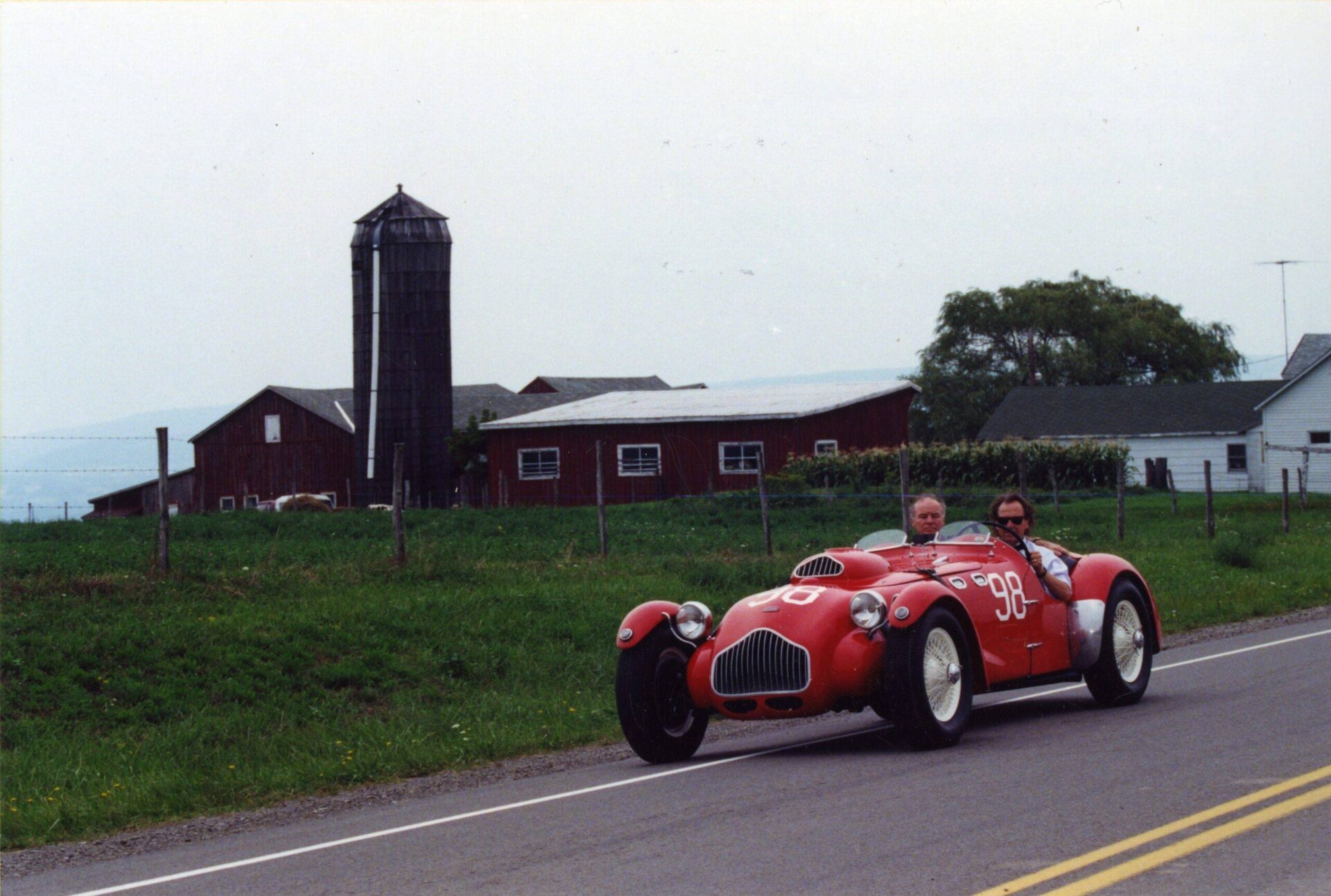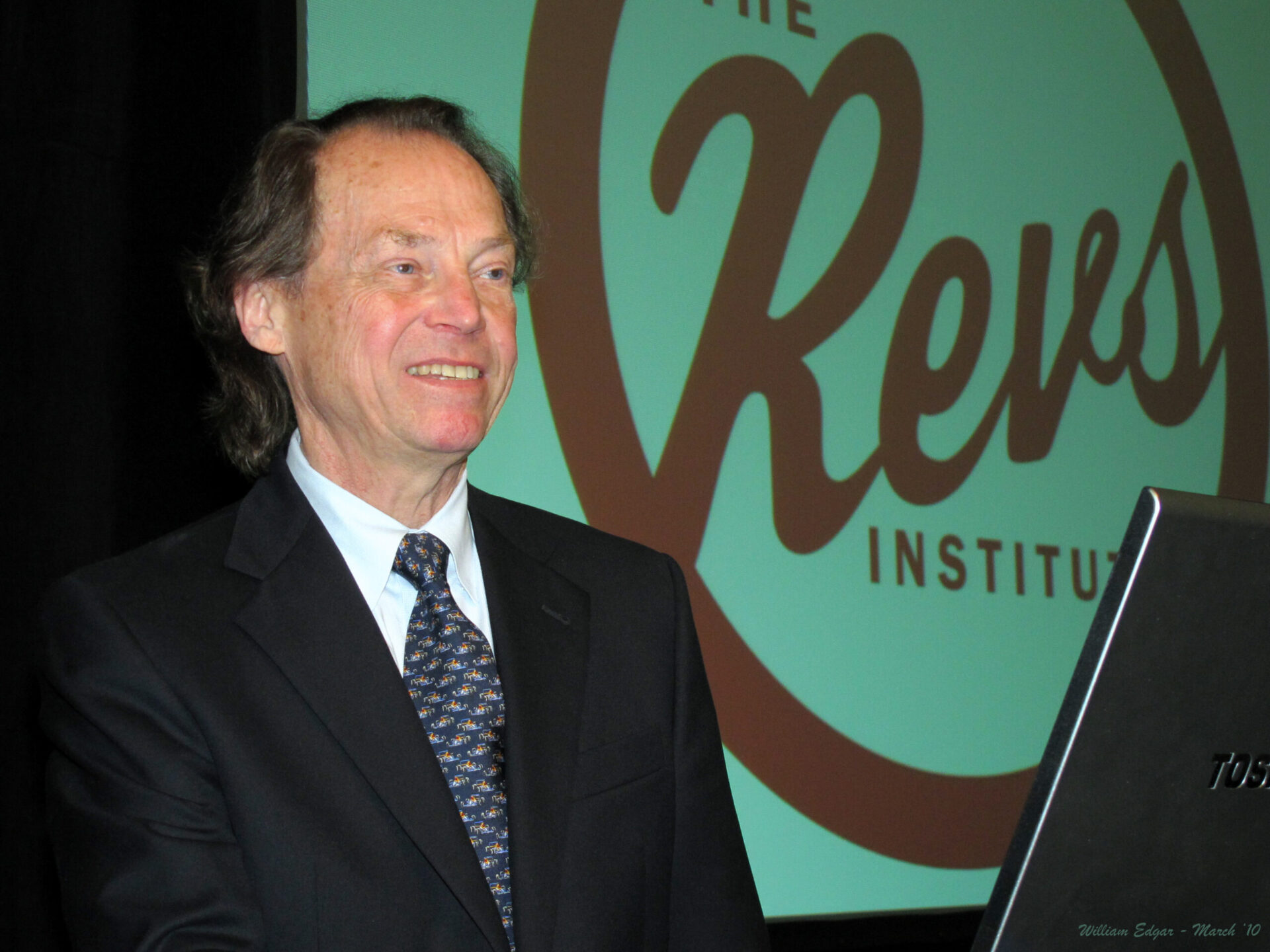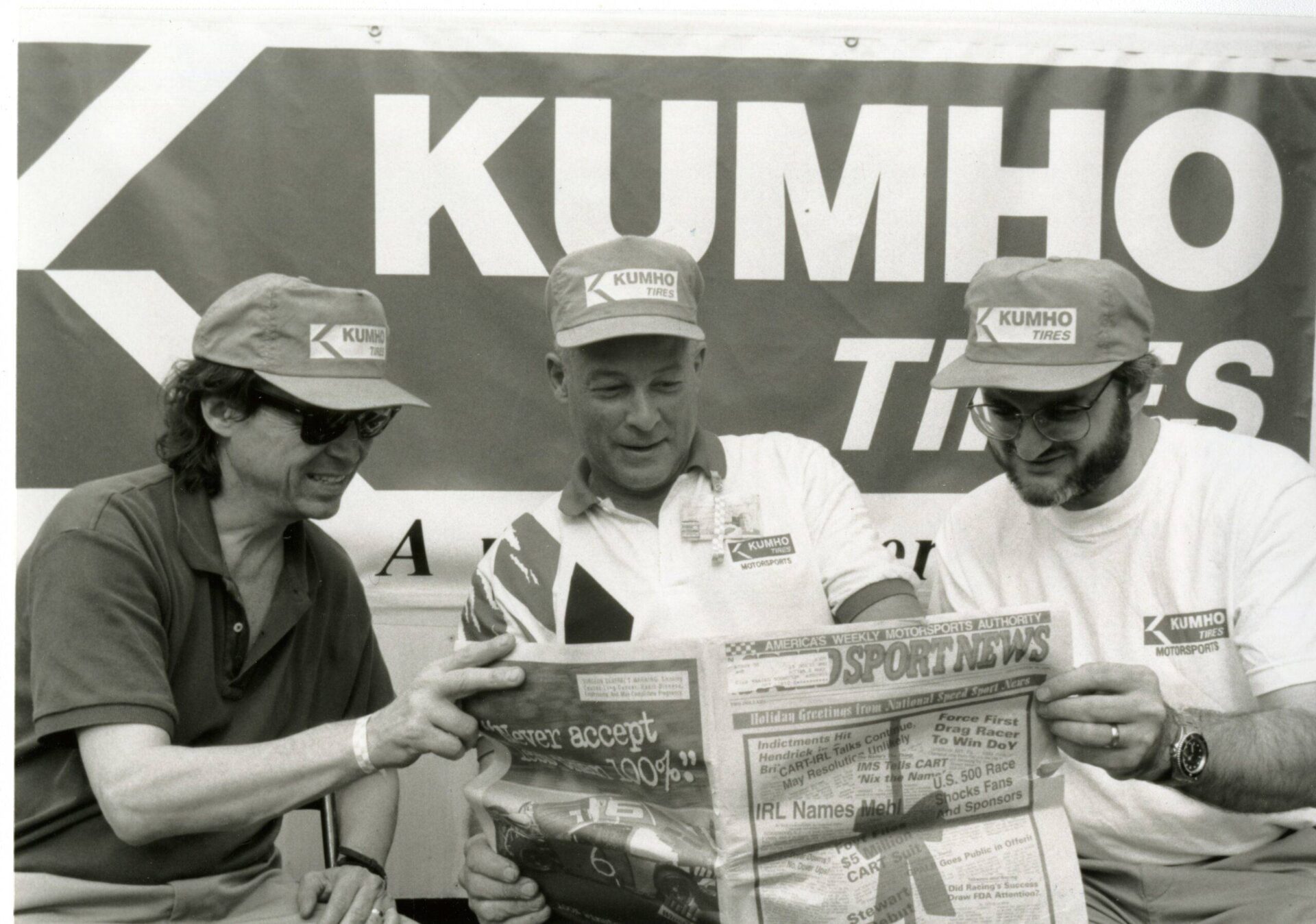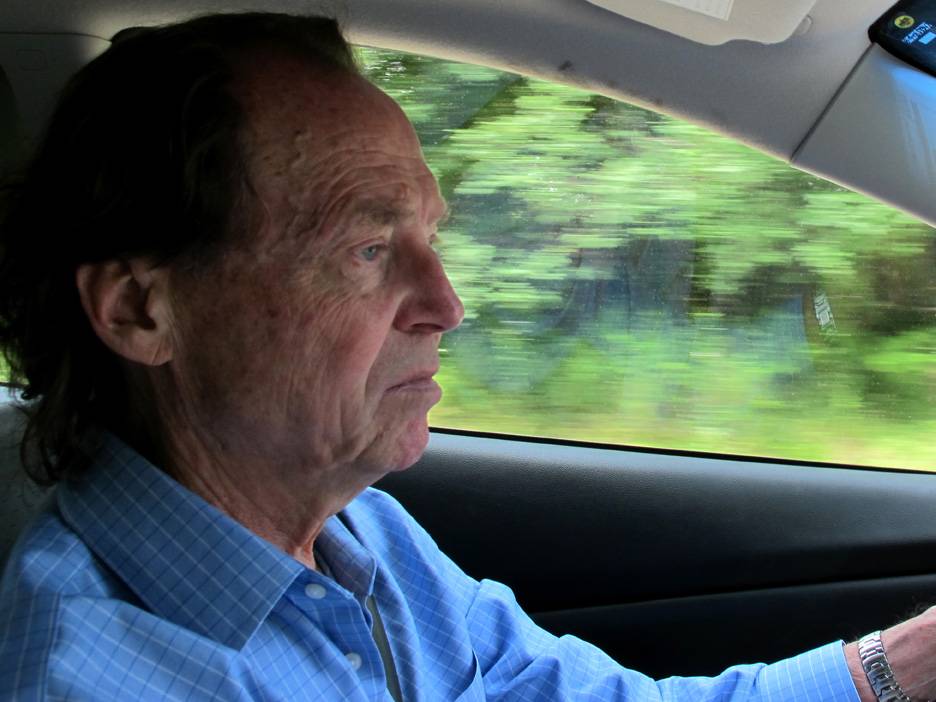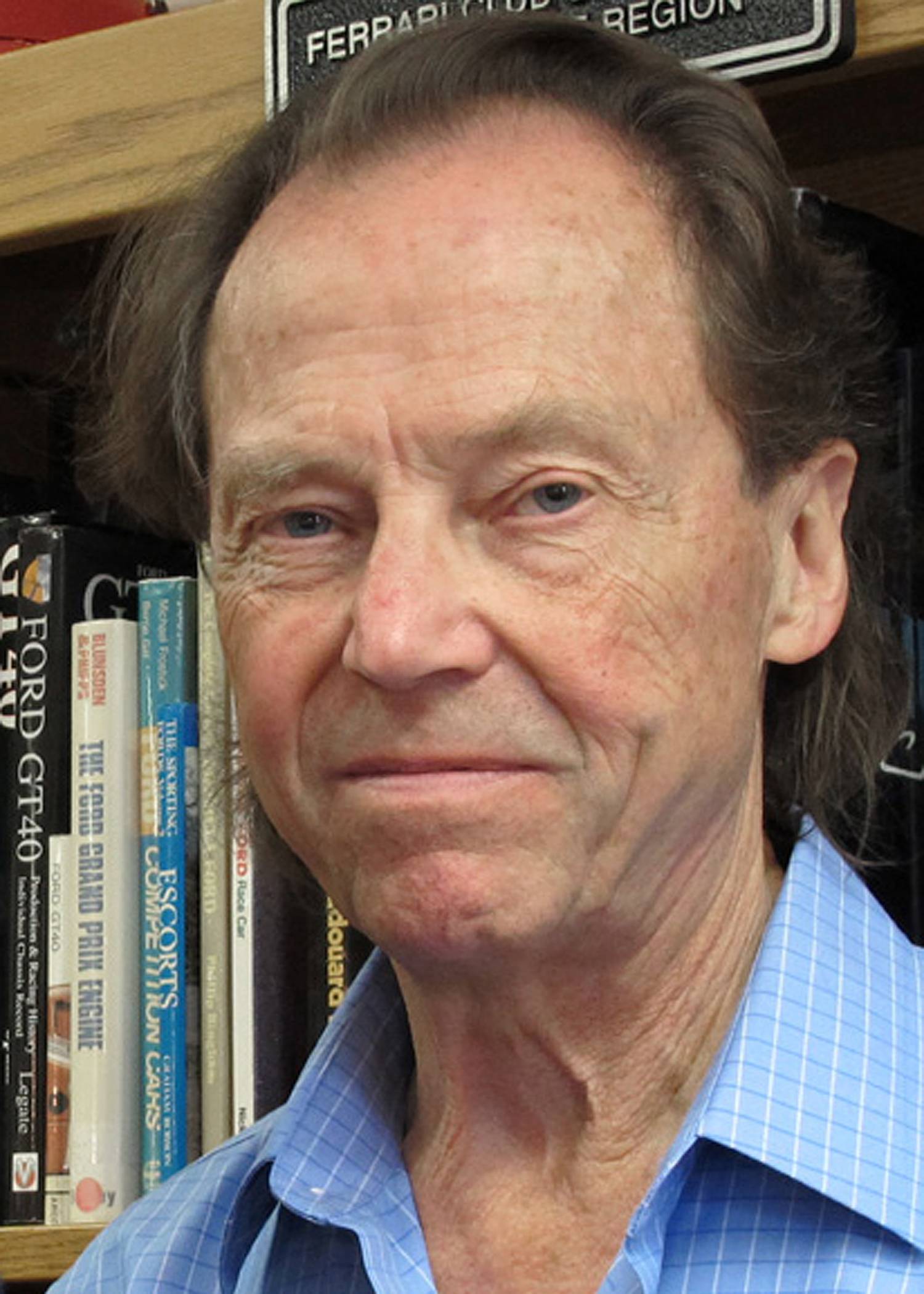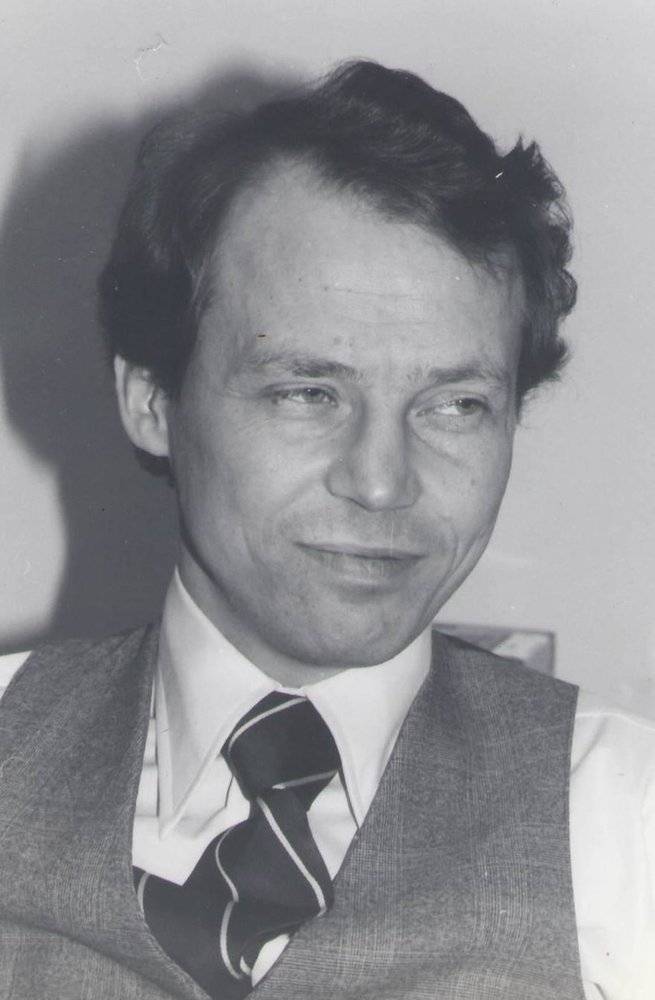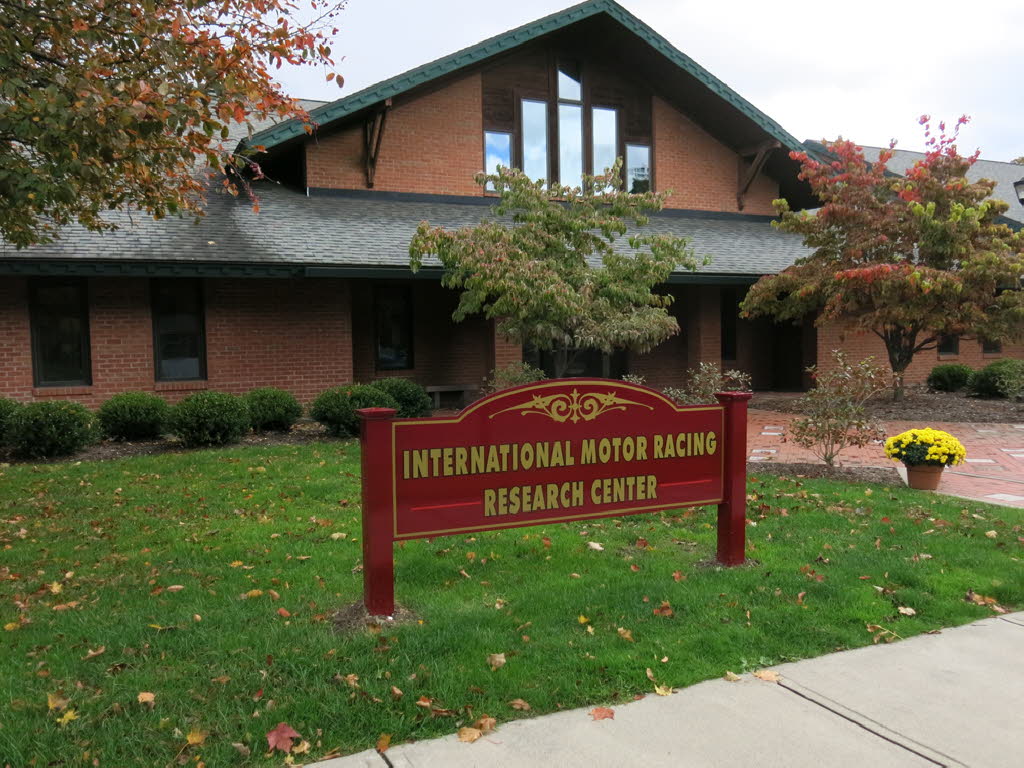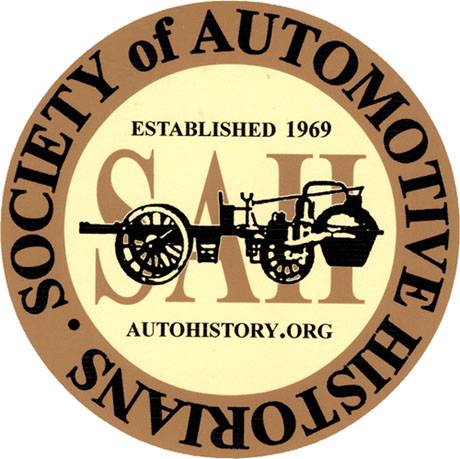In the roundtable, the team of Stocz, Robeers and Sullivan, explore the forgotten history of alternative power vehicles in motorsport, demonstrating that the current concerns over environmental impacts of auto racing – and the attendant hand-wringing over its future- are far from new. Showing how alternative power vehicles have been part of societies need for speed from the beginning, they will suggest how to harness this worry to instead create new buzz for racing.
Bio

Dr. Timothy Robeers is currently working as a research & marcom manager at b2sense in Brussels, Belgium. Following a career in academia, he remains affiliated with the Department of Communication Sciences at Antwerp University, Belgium and combines extensive expertise in market and communication research, social and environmental sustainability, and their applications in motorsport and media. Besides having participated as a driver and team-owner in rally raids across Africa, Dr. Robeers has also consulted for a range of motorsports businesses and organizations including Formula E and the Federation International de Motocyclisme. Additionally, he is a co-founder and assistant editor for the Journal of Motorsport Culture & History.

Mike Stocz is a senior lecturer of Sport Management & Leadership at the University of New Hampshire. He is one of the founding members and editor-in-chief of the Journal of Motorsport Culture & History. Mike’s previous works have included a bottom up framing analysis of the Tony Stewart-Kevin Ward Jr. incident on Facebook, as well as explorations of legal issues in K-12 sport administration, an economic funding model for college athletics, and a textual analysis of the American Outlaws fan group in the digital space.

Kate Sullivan is an assistant professor in Strategy & Enterprise at Scotland’s Heriot-Watt University, where she teaches a range of entrepreneurship and management courses as well as conducts research as a well-being and performance psychologist. She has also worked in the classic car industry for more than a decade. Ms. Sullivan personally holds several regional land-speed records.
Notes
Transcript
[00:00:00] Break/Fix’s History of Motorsports series is brought to you in part by the International Motor Racing Research Center, as well as the Society of Automotive Historians, the Watkins Glen Area Chamber of Commerce, and the Argettsinger family.
Aspects of Media Treatments of Motor Racing Topics. A roundtable with Timothy Robiers, Mike Stokes, and Kate Sullivan. All right, this is a hybrid presentation. Our first ever, so hold on to your seats. Aspects of Media Treatments of Motor Racing Topics. Mike Stotts is here in person, and in Scotland is Kate Sullivan.
In Belgium is Timothy Robiers. Mike Stokes is a Senior Lecturer of Sport Management and Leadership at the University of New Hampshire. He is one of the founding members and Editor in Chief of the Journal of Motorsports Culture and History. Mike’s previous works have included a bottom up framing analysis of the Tony Stewart Kevin Ward Jr.
incident on Facebook. As well as his [00:01:00] explorations of legal issues in the K through 12 sport administration, an economic funding model for college athletics, and textual analysis of the American Outlaws fan group in the digital space. All right. Good morning, everybody. To those of all of you who are attending here in person and good time of day, wherever you are at around the world.
My name is Mike Stotes. The last time that all of us were gathered here, there was snow on the track. So We appreciate the weather for cooperating with us today. We got three presentations that are a little bit different to kind of give a little sampling of different, more new age motor sport type research endeavors.
We’re all in some form or fashion academics. Myself, Mike Stoats. I am from the university of New Hampshire currently. And editor in chief of the Journal of Motorsport Culture and History joined today by Dr. Timothy Robiers over in Belgium and Professor Kate Sullivan all the way over from Scotland. So let’s go ahead and get [00:02:00] into it.
My presentation for you all today is a media comparison between The first two African American NASCAR drivers to win at the highest level of NASCAR, that being Wendell Scott and Bubba Wallace. So this is a paper that is in progress currently, just shy of about halfway through the articles I’ve collected.
So Presenting on some things that may change by the time that I submit this for publication consideration, the two drivers themselves, Wendell Scott won his first race and really only top series cup race on December 1st, 1963, down in Jacksonville, Florida, as Bubba Wallace won more in recent memory in October of 2021 at his designated home track, Washington, In Talladega down in Alabama, somewhat as some of the previous academic [00:03:00] scholars have discussed, there is a lack of research within not only just the realm of motorsport, but also within the realm of NASCAR itself.
There are a couple of studies that had a little bit of precedence and a little bit of presence through my analysis, including a little bit of a survey methodology distributed out to NASCAR fans about anti racism mobility, mostly relating to Wendell Scott’s career. I’m also stealing from, well, borrowing, I guess, is the proper academic term for it.
Some of the techniques used by my colleague, Tim Robeers, just before the pandemic and applying them more in a NASCAR sense. A little bit more about the background on Wendell Scott. His win came December 1st, 1963 down in Jacksonville at Speedway Park down in Florida. It was a half mile dirt track race in which future [00:04:00] Hall of Famer Buck Baker was initially declared the race winner.
I now consider myself middle aged because I’m out of my 20s, but didn’t used to be that we would keep score electronically. We used these weird things, pencils, pens, and paper to log down the lap times and who was in the lead, etc. It got confusing and a lot of times led to some forms of corruption. Maybe some people’s finishing position was smudged a little bit.
So after the race, it was pretty common that one driver, at least one, would ask for an audit of the lap recording times and such. And Wendell Scott decided to do just this. It took about two hours for NASCAR officials to come back and say, Yeah, actually, Wendell, you did end up winning that race. Another interesting little bullet point for this.
Buck Baker was declared the winner after 202 laps of a race that should have only gone 200 laps. There are some estimates out there that place Wendell Scott as the winner by as much as eight laps. [00:05:00] Then, in more recent memory, we have Bubba Wallace’s first win. Down at Talladega during the pandemic, Talladega and Bubba Wallace had a pretty negative marriage, you could say, but coming out of that, at least somewhat from NASCAR’s perspective.
We see Bubba Wallace win his first Cup Series race at Talladega. Further, we see him win in a rain delayed race. Another interesting similarity between the two drivers, outside of both being African American competitors, we also see that the first two African Americans to win in the highest series of NASCAR, Had different lap totals for the race than originally advertised.
So kind of a cursory comparison. A little bit more academic background and a little bit more into what I was looking into. I was looking into how the media portrayed both Wendell Scott and Bubba Wallace. A lot of the similarities personality wise somewhat stop after the two kind of [00:06:00] cursory comparisons earlier.
But we also see from academic research, and this is kind of a, well, no duh situation, that whatever kinds of media we consume, it’s going to influence us in some way. So if we’re reading articles that continually say that, well, this driver is not that good, then we’re more inclined to believe that. In this piece, I wanted to tie my love for communications based research with historical research to be a little bit more in line with conference itself and expand at least a little bit more into the digital world, particularly through the ways that I collected these articles off of an older study that myself and a couple of colleagues worked on surrounding the Tony Stewart, Kevin Ward Jr.
dirt track incident. So the methods that I shamelessly borrowed from Dr. Robiers used a program called Lexamancer and Lexamancer giant database a lot of times used for legal studies, but can also be used to gather mass media [00:07:00] representations. So what I did was put in very similar search terms for both Bubba Wallace and Wendell Scott to bring down.
And I accidentally left off how many were brought down for Bubba Wallace’s, but in general, I brought down 700 articles in total, dating back to the late 1970s. After I get done with this set, there’s going to be a little bit more digging into some archives, so Mark, if you find a place that has these somewhere, let me know, okay?
Some of the very early results here, what I did was going article by article, roughly, again, about half of them per driver so far, is to try and find some of the predominant themes or frames in which the media was trying to represent these drivers within the context of their first victory. Some of them are similar, some of them are a little bit different.
The first one for Bubba Wallace, the main frame itself was he was the second African American to win at the highest level of [00:08:00] NASCAR. That one’s pretty self explanatory. There were also a lot of comparisons to Wendell Scott, and herein we see some of the contradictions in that Wendell Scott being a veteran, Bubba Wallace kind of coming into the sport and having that as his primary job right out of the gates and into adulthood.
We also see a frame of, I initially put it down as surprise in that Bubba Wallace won from the current media depictions, but there were a lot of references to his previous results and how they, by and large, haven’t been great outside of super speedways. So outside of Daytona International Speedway and Talladega.
Hasn’t run as well, except for recently. Obviously he did win at Kansas. So with Windell Scott, there was one of the main themes that I’ve seen so far. In the early parts of the analysis, there was a heavy emphasis on his service to our country. This was one of the main predominant themes, and it was very [00:09:00] shocking to me that we’re going to talk about that instead of him historically being the first African American to win at that level, although obviously that would come up next to we would see some previous results, but in a way that differs.
From Bubba Wallace’s in that a lot of Wendell’s previous results were talked about more in a positive light, some of his relationships with drivers at the time, such as the king, et cetera, and just some very cursory discussions and conclusions from what I’ve found so far is that These drivers, although they have very similar, at least on track, pure results, not taking in other outside factors, at least a little bit similar successes, these drivers have been shown in almost, in very different lights, even with very similar frames being, namely right now, previous results, which may change over time.
There were some differences in the driver’s situation, both [00:10:00] politically and socially. That were seen throughout as not necessarily a theme just yet, but just an observation. And some of the things that we’ll kind of look into into the future with this is Bubba Wallace himself obviously has been a little bit of a polarizing figure within the NASCAR community.
And just seeing how some of the individual actions that have happened to this athlete are going to impact his career and media representations. Thereafter, obviously, we had the Kyle Larson incident in which Bubba Wallace was run into a wall and then subsequently hooked. Larson could have caused major damage, also resulted in a one way shoving match.
We also had Bubba Wallace becoming the first African American driver to win two top series NASCAR. So with that, just to keep everything somewhat in line, I’ll go ahead and turn it over to my colleague, Tim Robeers. Timothy Robeers is currently working as a Research and Markham [00:11:00] Manager at B Squared Sense in Brussels, Belgium.
Following a career in academia, he remains affiliated with the Department of Communications Scientists at Antwerp University in Belgium, and combines extensive expertise in market and communications research, social and environmental sustainability, and their applications in motorsport and media.
Besides having participated as a driver and team owner in rally raids across Africa, Dr. Rabires has also consulted for a range of motorsport businesses and organizations, including Formula E and the FIM. Additionally, he is a co founder and assistant editor for the Journal of Motorsport Culture and History.
Thanks, Mike, for the introduction and, um, and your great presentation. Great to see that my methods are being used by, uh, my closest friends and colleagues. So great to see them. Hi everyone from Belgium, from Bruges, more specifically a couple of years back. I was there in the snow, as Mike said, this time it’s digitally.
I want to talk, uh, sort of in relation to the media treatments of [00:12:00] motor racing topics, specifically about sustainability, those of you. That know me and I’ll first briefly introduce myself for those that don’t. I am Timothy Robiers, doctor in social sciences with a focus on communication and media. I did my PhD on media representations of sustainability in motor sports.
Specifically in relation to Formula E at the time, which came, uh, about in about 2013 and it was basically the first and second generation that I covered in my research. I also have a little bit of experience as a driver myself, participated in 2013 and 14 in a number of rally rates. In Africa, the intercontinental rally, for example, but currently I have left academia.
I’m still doing a little bit of research. I’m working in marketing, communications research, specifically on brand performance and innovation. And of course, corporate sustainability, which is something I want to talk about today. Because obviously sustainability in motorsport is something that we keep coming across [00:13:00] more and more, obviously here in Europe with all the different FIA series, Formula E, Formula One, World Rally, Cross World Rally Championship, the WEC, et cetera.
They’re all things where more and more. Sustainability as a word, we’re seeing it emerge literally everywhere. It’s been going on for a couple of years and especially with the United Nations sustainability goals for 2030. It’s something that will only increase in importance and significance. Now, the thing is, what is this sustainability thing about?
Everybody uses the word, nobody seems to know what it really stands for. So. One of the things that we’ve done for this research, and it’s, this is something that will be published, but later on as part of a handbook on global politics of motorsports, we went to look at what sustainability means in terms of a definition.
Obviously it comes from the United Nations that, uh, developed it in the 19th century. In 1987 in the Brundtland for Ford saying that it’s a developments that meet the needs of current generations without compromising [00:14:00] those of others. Obviously, depending on certain factors, such as time, social contact and industry and combines three major pillars, which is the environmental side, which is what most people think about, but also a social and an economic side.
Obviously, we’re here to talk about motorsports and the significant thing, of course, is that ecological sustainability within motorsport really needs to be seen as part of a larger chain of developments, not just in motorsport, but also in wider society. Those pillars of ecology, social aspects, and economic aspects all are interrelated.
And we’ve. Determined that it’s not just something that’s come about recently. It’s something that’s actually been developing as part of that larger structure for a while. For example, when we look at motor racing and it’s all moving formula one, we’ve seen that in the 20th century, there was a resilience towards sustainability.
Obviously we’re not talking about the ecological aspect, but the social aspect, we’ve seen that there was a resistance to driver safety. It was all about, you know, in the fifties and sixties, technological [00:15:00] developments that focused on speed and entertainment. Driver safety came about, you know, in, in the sixties when in, uh, 66 in Belgium, we had a massive crash, 69.
Similarly with Jackie Stewart. Drivers in 69 didn’t wanna participate because of the risks. This evolved in the seventies with Lauda as well as we all know. So these are all a combination of internal pressures that started to build over the decades. However, they were met with little action until quite late in the 20th century, more and more was being done.
Pressures were too great also externally because of the casualty rates in formula one, which led to Sid Watkins, for example, being appointed as part of the chairman of the experts advisory committee. Which of course saw positive developments to the extent that more socially sustainable frames became relevant for Formula One.
And of course, this is something that sort of followed in other series as well, where Formula One, especially in Europe, is still considered the pinnacle [00:16:00] of motorsport. And of course, as a result, it was being followed only by series after that. Obviously this sustainability element is something that especially in the last 20 years has developed as a result of a number of reasons.
I’ve listed five here, as you can see, we’ll go into detail a little bit more about each of these, but these literally gave rise to the sustainability movement that we’re now talking about in that now we’re now seeing in motorsport, especially here over in Europe, predominantly so. So the first is the digital media and communications revolution, obviously, with the rise of the internet, rise of social media.
What we’ve seen is that there’s a new media disruption that has impacted on different levels, and they’ve meant for that there’s an increased level of transparency from any company’s organizational Motorsport, that is just as much the case. And as a result, or they still do, or they started to play an [00:17:00] increasingly important role in shaping the knowledge of and offering critical insights into different environmental sustainability initiatives, which is one step towards sustainability being so prominent as it has been.
Second is mediated transgressions. As a result of that media revolution, what we’ve seen is that increasingly criticisms have come about, including motor sport events, most prominently. Those that have occurred, for example, in Belgium in 2013, where the Belgian Grand Prix was boycotted by Greenpeace, you might remember.
And of course, as a result, the whole media representation really influences the perception and transgression or misconduct of motor sports. We’ve seen elements, initiatives from the FIA, Action for Environment, et cetera, which they call deep modifications, green regulations, et cetera. Which have increasingly through media exposure been criticized, done away with as greenwashing, green hushing as well.
[00:18:00] And of course led to the biggest media transgressions in motorsport being dieselgate. Now dieselgate obviously also led to an increased scrutiny of the whole automotive industry, affecting motorsport as a result and leading to environmental activism. We all know the persons that are on the screen, the one in the middle has little to do with motorsport, but has had a massive impact nevertheless on the way also drivers such as Lewis Hamilton, Sebastian Vettel, et cetera, have behaved in motorsport.
And as a result, that also through media scrutiny. Has led to greenwashing criticisms. However, the environmental activist movement has definitely meant that the sustainability aspect has protruded motorsport further and further, even though it might be negative attention, it’s still attention nevertheless.
A lot of these sustainability efforts clash with the goal to sell what is often considered an authentic or nostalgic sporting experience. And as a result, they can only be implemented up to a [00:19:00] certain level before it affects fan experiences. Sustainability watch bodies follow the notions of environmental activism.
Of course, motorsport such as the FIA have set up sustainability accreditation initiatives and have done reports on a number of track analysis, team analysis, et cetera, all when it comes to sustainability reporting. And of course, all of this has given rise to electric motorsports in the last 10 years, something that by many has been criticized at the early onset as.
Something that would not be able to be sustainable. However, 10 years on, we’re seeing Formula E going into its third season. We see the rise of extreme E electric touring car, et cetera. Even in the Dakar, we are now witnessing Audi participating with a full electric rally rate vehicle. So it’s definitely a step following that mediated evolution that started about 20 years ago.
This has a couple of opportunities for the future for Formula One, for example, but there’s also a risk of falling out of [00:20:00] space. Formula One, for example, envisions a step by step increase to use synthetic biofuels for its engines. It wants to be sustainably fueled. Again, that notion of what is sustainable by 2026.
However, we already see that other series are looking at other ways of becoming sustainable through hydrogen power, such as the WEC, but the biggest problems remains fans, the travel of fans, the travel of teams, and of course the logistical elements that come with it. Proactive efforts in motorsport need to avoid being undercut by contradictory practices.
And it’s very important to try and do away with undercutting criticism of greenwashing, greenhushing and sports washing. Because obviously the fact that Formula One and other major series are participating in environments that are not considered to be the most socially sustainable. Also adds to the pressures of the whole sustainability scrutiny and mediatization narrow.
The opportunity that this presented is a trickle down effect. [00:21:00] Where motorsports in its very earliest origins was able to use the technological innovations to its advantage for a race on Sunday, sell on Monday principle, which is sort of lost during the last decades. It’s something that it’s now gaining again.
And as a result, we can see that sustainable technology is leading to an increase in manufacturers and consumers of electric vehicles. It’s attractive to fans, watch bodies. And as a result, it also can attract new, especially younger. Demographics of fans also means that lost revenue streams in terms of the traditional motorsport can be regained through digital broadcasting, social media, interactivities, and elements of gamification that come with these newer technologies associated with electric and more sustainable racing.
So as a conclusion, the rise of ecological sustainability needs to very much be seen over larger path of development in motorsports and an integrated framework. Societal pressures, expectations of younger demographics and disruptive new series threaten [00:22:00] traditional ways of motorsports. And the current decade offers opportunities for motorsports to definitely regain technological and societal relevance through the trickle down effect and the shift to revenue streams that include cause related consumerism.
Fourth and lastly, there’s a transparency and consistency that is very important in using sustainability in motorsports. And as long as teams and series can show that they are engaging with it in the coming decade, that in itself is more important than saying that they have become green, the road to become green or to become sustainable is far greater, far more important than the end goal.
With that, I thank you. I will spend no more time. I will give the words to Kate. Kate Sullivan is an assistant professor in strategy and enterprise at Scotland’s Heriot Watt University, where she teaches a range of entrepreneurship and management courses as well as conducts research, as well as being a performance psychologist.
She has also worked in the classic car [00:23:00] industry for more than a decade. Miss Sullivan personally holds several regional land speed records. In the roundtable, she explores the forgotten history of alternative power vehicles in motorsports, demonstrating that the current concerns over the environmental impacts of auto racing and the attendant hand wringing over its future are far from new.
Showing how alternative power vehicles have been part of society’s need for speed from the beginning, she will suggest how to harness this worry to instead create a new buzz for racing. And hello everyone. Thank you to Mike and Tim. Thank you to everyone for allowing Tim and I to be overseas while we’re doing this.
Very sad to not be there in person, regardless of whether there’s snow on ground. As Tim said, sometimes life gets in the way. I taught a three hour seminar this morning here in Edinburgh, Scotland, and now I’m remoting it to join you all. As we’ve said, I’m Kate Sullivan, I will be carrying together some of what Mike did and some of what Tim did in my [00:24:00] presentation today, which is fuel dual, how gasoline came to rule motorsports.
So who am I in the first place? I’m Kate Sullivan. I’m an assistant professor of strategy and enterprise at Heriot Watt University in Edinburgh, Scotland. By training, I’m actually a psychologist. I specialize in work, well being, and performance. And I look in particular at what we value and how we deploy our time and energy.
Part of that work has been me as an autolithic historian, and I tend to look more at the cultural aspect. So the cultural turn here is exactly what I’m in for. I’m also an ethnoarchaeologist. I look at the value we place on the things we use. But more than that, I’m a car person. I’m a land speed racer.
I’ve been to a number of events with my parents who are also extremely active record setting land speed racers. I have been accused at times of being the lady of the four cylinder. I like to make very [00:25:00] small engines go very fast and I love vintage cars. Well, I love being here and getting to do this work.
So let’s go back further than to the early days and the beginnings of alternative power. Motoring’s early days featured a range of power. We had electric cars from the very beginning, as well as hybrid cars starting in even the 1830s. We had electric and hybrid vehicles. We also had steam vehicles from the very beginning, because this was familiar technology simply being used in a new way.
From there, we got to what we have today, the internal combustion, ICE or ICE engine. The first experimental lightweight electrics in the U. K., U. S., and the Netherlands were in the 1930s. By contrast, Carl Benz first demonstrated his motor wagon in 1885, and didn’t receive a patent until the next year. By 1893, Chicago’s World Exposition [00:26:00] featured six different types of electric cars.
Rain. Is as old as the history of cars themselves. By 1900, the number of electric vehicles in the United States was almost 50 percent of the market. Steam cars made up another extremely large portion, but gasoline lagging vastly behind. 38, 000 cars in the United States in 1900 were electric. From the very beginning, all fuels have been using electro bats made in Pennsylvania.
And the Homebrew Riker Electric won a series of five mile sprints against Gasoline Darius, some of the best funded automobiles of the day, all the way back at the beginning of American race. We also see that all power quickly gained land speed dominance as well. Just down the road from where Tim is, about 20 miles away, La Jamaïque aux Ponts, operated by Camille [00:27:00] Genezi of Belgium, on the 29th of April, 1899, was the first vehicle to exceed 100 kilometers per hour.
105, that’s just under 66 miles per hour. This was also the first purpose designed land speed racer, and it was an electric. If you see in this picture down here, we even have Genossi going on a tour to celebrate both his marriage and his victory, his wife riding on the back because it was silent and clean.
We see as well the Stanley rocket, designed by the Stanley twins, built with an inverted canoe for streamlining as its body, driven by Fred Marriott on Daytona Beach. In 1906, it set a world record of over 127 miles per hour. That record stood for a steam powered vehicle until August of 2009. It took that long for steam power to again see that kind of [00:28:00] dominance.
The rocket still holds the record for any vehicle 30 horsepower or less. But if all fuels were doing this well… Why did gasoline win? Why did the old fuel racers disappear almost completely by 1910? One of the major reasons was a change in format, particularly in the United States. We moved from straight line races and speed contests, road and oval.
In America, this was largely because we had a preference for oval track horse racing. And we already had these tracks available. Simply putting cars on an existing track allowed us to then have demonstrations of drones, for instance, at agricultural fairs. It also improved the spectator experience.
Instead of waiting for a single pass of a car, you could sit in stands and watch them lap multiple times. Plus, having a controlled environment helped to minimize public safety concerns. As Tim said, this has been a point of development throughout [00:29:00] racing history. These longer races then started giving the advantage to gasoline.
They’re fast and easy to refuel, and they have a longer range. It takes a while to get the steam car up to pressure. They have to be refueled of two different types, whatever’s being used for combustion. and the water tank. And then on top of that, electric cars back in the day as today take a few hours at best to refill.
There were swappable batteries then, but they were large, they were clunky, and you could fill a petrol tank much quicker. We also saw concerns of safety. Again, as Tim mentioned, in 1902, the electric Baker Torpedo, in a demonstration, searching for a high speed record, killed two people when the steering went awry and it careened into a crowd at an estimated 104 miles per hour.
The driver and his engineer survived because they were wearing seatbelts. This was in fact the first vehicle to be outfitted with them. However, [00:30:00] the driver and designer, Baker, was arrested for murder and released the next day. There began to be concerns about electric and steam vehicles in particular being dangerous because of all that torque from initial start.
The Stanley Brothers pulled out of racing despite their success after Marriott took the new version of the Rocket out and had an absolutely spectacular crash. We can see the aftermath of in the center picture, where, basically, it’s astonishing Marriott lived. First person on scene was a doctor who had to put his eye back in its socket.
He got up, walked away, and wanted to race again. In terms of general safety, electric cars, if you get in a crash, electrical fires are difficult to suppress. And steamers, as we see in the far picture, have a tendency to explode. The boiler just goes up and takes everyone with it. Not ideal. We also saw issues of reliability.
Many early racetracks were in the north, and electric cars then, as now, don’t perform [00:31:00] well at low temperature. So particularly in the United States and Northern Europe, where most racing was developing, these cars simply could not compete with an internal combustion engine in winter. Steam cars take time to bring to pressure.
Development of the electric starter changed the game for gasoline racing. So why are alt fuels on the rise again, as Tim noted? Public opinion. As Tim said, there’s a focus on sustainability and emissions. As well as a focus on noise concern, and this presentation is part of a broader paper that I’m developing that brings in media similarities between public opinion and worries about sustainability, emissions, and public safety, as well as noise and sociability concerns that are almost identical.
In the 1900s and 1910 press, as they are today, we also see better technology, there’s better batteries, there’s longer life and faster charging, not to mention some of the more ecological [00:32:00] fuels that Tim mentioned. So how do we boast interest in rodents as a whole? Knowing this history and knowing the ups and downs of racing in the public eye over the years.
Well, first calling back to what Tim said, trickle down to Bordeaux, race on Sunday, sell on Monday has always been. It’s stated on the Porsche website as one of the reasons that Porsche, after many years out of the electric stain, is getting back into it by relaunching its expertise from late 1800s in electrics and hybrids.
We see the faster recharge in a longer range, and we’re able to use all of this to expand motorsport appeal through marketing, through the sustainable and technological nature of Formula E. We can get people who wouldn’t be interested regularly to potentially welcome motorsport into their lives, and we can lean into sustainability in our communications.
We can [00:33:00] influence the media. So tell this story of motorsports, enjoyment, sustainability, and excitement as we re enter a green period in motorsport history. And with that, I’d like to mention as one kid at the beginning, the three of us are involved in the journal of motorsport culture and history, which.
In some respects, traces its beginnings to part of the Argensinger, when Mike had had this idea for a journal that focused on culture and history, instead of simply technical aspects of motoring and motorsport. He brought the idea up. Several of us at a previous symposium thought it was a marvellous idea, and lo and behold, there was the founding of the Journal of the JMCH in 2019.
Editorial contributions and direction from other regular contributors. And occasional submissions and editorial from me as well, with Tim sitting on the board. [00:34:00] And we’re accepting academic papers on cultural and historical turns in motorsport. Exactly what we are looking at, at the audience here. And this can be sociology, cultural studies, communications, history, psychology and performance of sport.
Which I look into. And this is a peer reviewed journal. We welcome your submissions. You can look us up online and I have the link here on my slide. They would love to see some of the papers come out of this conference. And with that, let’s remember that what’s old is new again. Green doesn’t have to mean the end of motorsports.
In fact, it’s only the beginning, as we’ve already seen through time. Thank you all so very much. If you have any questions for us, you can direct them to me and I can give them to my colleagues overseas, but, uh, on behalf of all of us, thank you all so much for your attention and time. So thanks again. This episode is brought to you in part by the International Motor Racing Research Center.
Its charter is to collect, share, and preserve the history of motorsports, spanning continents, eras, and [00:35:00] race series. The center’s collection embodies the speed, drama, and camaraderie of amateur and professional motor racing throughout the world. The Center welcomes serious researchers and casual fans alike to share stories of race drivers, race series, and race cars captured on their shelves and walls and brought to life through a regular calendar of public lectures and special events.
To learn more about the Center, visit www. racingarchives. org. This episode is also brought to you by the Society of Automotive Historians. They encourage research into any aspect of automotive history. The SAH actively supports the compilation and preservation of papers. Organizational records, print ephemera, and images to safeguard, as well as to broaden and deepen the understanding of motorized wheeled land transportation through the modern age and into the future.
For more information about the SAH, visit www. autohistory. org.
We hope you enjoyed another awesome episode of [00:36:00] Brake Fix Podcast brought to you by Gran Touring Motorsports. If you’d like to be a guest on the show or get involved, be sure to follow us on all social media platforms at GrandTouringMotorsports. And if you’d like to learn more about the content of this episode, be sure to check out the follow on article at GTMotorsports.
org. We remain a commercial free and no annual fees organization through our sponsors, but also through the generous support of our fans, families, and friends through Patreon. For as little as 2. 50 a month, you can get access to more behind the scenes action, additional Pit Stop minisodes, and other VIP goodies, as well as keeping our team of creators Fed on their strict diet of fig Newtons, gumby bears, and monster.
So consider signing up for Patreon today at www. patreon. com forward slash GT motorsports, and remember without you, none of this would be possible.[00:37:00]
Livestream
Learn More
Consider becoming a GTM Patreon Supporter and get behind the scenes content and schwag!
Do you like what you've seen, heard and read? - Don't forget, GTM is fueled by volunteers and remains a no-annual-fee organization, but we still need help to pay to keep the lights on... For as little as $2.50/month you can help us keep the momentum going so we can continue to record, write, edit and broadcast your favorite content. Support GTM today! or make a One Time Donation.
This episode is sponsored in part by: The International Motor Racing Research Center (IMRRC), The Society of Automotive Historians (SAH), The Watkins Glen Area Chamber of Commerce, and the Argetsinger Family – and was recorded in front of a live studio audience.
Other episodes you might enjoy
Sixth Annual Michael R. Argetsinger Symposium on International Motor Racing History

After a hiatus of two years due to the pandemic, the International Motor Racing Research Center (IMRRC), partnering with the Society of Automotive Historians (SAH), presents the Sixth Michael R. Argetsinger Symposium on International Motor Racing History. The Symposium established itself as a unique and respected scholarly forum and has gained a growing audience of students and enthusiasts. It provides an opportunity for scholars, researchers and writers to present their work related to the history of automotive competition and the cultural impact of motor racing. Papers are presented by faculty members, graduate students and independent researchers.
The history of international automotive competition falls within several realms, all of which are welcomed as topics for presentations, including, but not limited to: sports history, cultural studies, public history, political history, the history of technology, sports geography and gender studies, as well as archival studies.
The symposium is named in honor of Michael R. Argetsinger (1944-2015), an award-winning motorsports author and longtime member of the Center’s Governing Council. Michael’s work on motorsports includes:
- Walt Hansgen: His Life and the History of Post-war American Road Racing (2006)
- Mark Donohue: Technical Excellence at Speed (2009)
- Formula One at Watkins Glen: 20 Years of the United States Grand Prix, 1961-1980 (2011)
- An American Racer: Bobby Marshman and the Indianapolis 500 (2019)




































